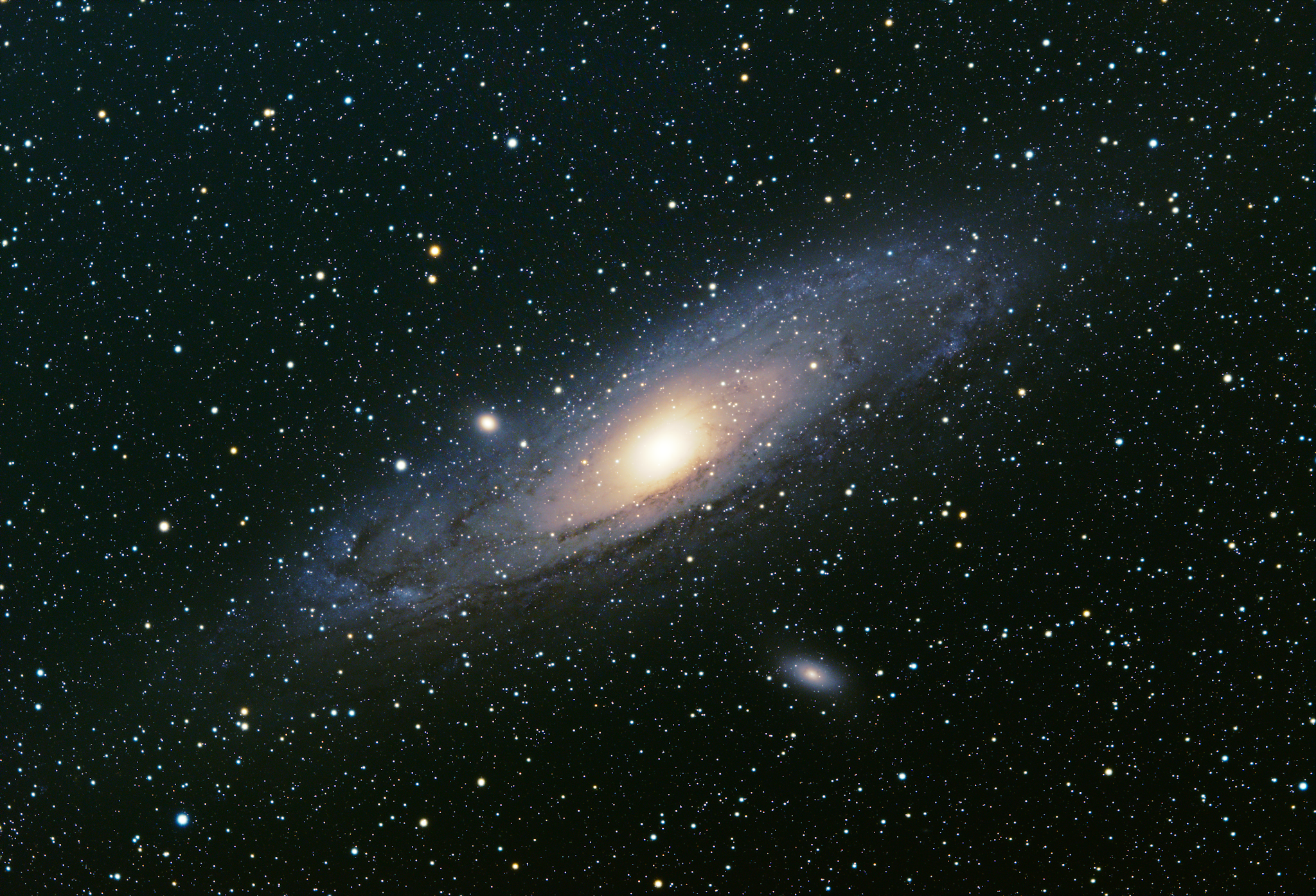A Tale of Many Islands: The Andromeda Galaxy

|
| The Andromeda Galaxy (Messier 31) with other galaxies M32 and M110 |
The Andromeda Galaxy is a fantastic marvel in the night sky right now. It is physically 50% larger than our own galaxy and contains an estimated 300 billion stars. By pairing its large size with a relatively short distance to our galaxy (2.5 million light years), its full appearance in the sky spans that of 6 full moons. However, the portion that is visible to the human eye will appear smaller since only the galactic core is bright enough for us to distinguish. The estimated trajectory of M31 suggests an eventual collision with our Milky Way Galaxy in about four billion years.
The Universe as a Solitary Island
The earliest recorded observations of the Andromeda Galaxy were written in the
year 964 CE by the Persian astronomer Abd al-Rahman al-Sufi in the
Book of Fixed Stars. In this book the observation is written as ‘nebulous smear’. In 1764,
slightly more detailed observations were noted in the Messier Catalog,
where the object was assigned its most famous designation
Messier 31 (M31). Here is a brief snippet from the 1784 edition of
Connaissance des Temps:
“The beautiful nebula in the belt of Andromeda, shaped like a spindle. Mr.
Messier has investigated it with different instruments and has found no
stars in it”
During this era of our understanding, the Andromeda Galaxy was merely a
peculiar smudge with no stars. One that was understood to reside within the
single yet grandest island in the universe, the Milky Way.
An Island Among Billions
In the early 1920s, the
Great Debate
began between two American astronomers; Heber Curtis and Harlow Shapley.
Curtis had observed novae in the M31 region to have an apparent brightness
10 orders of magnitude fainter than elsewhere in the sky (that’s 10 billion
times fainter). He adapted the hypothesis that there were “island
universes”, independent from the one we appear to be in. Shapley opposed
Curtis’ hypothesis and argued that these objects were small and existed only
in the outskirts of Earth’s home galaxy.
Edwin Hubble made measurements that ended up settling the debate. He
measured what are called
Cepheid Variables
which gave a more robust estimate of the relative distance of M31, putting
it at a distance way farther than could be considered as part of our galaxy.
Providing the evidence needed to support Curtis' hypothesis (and disprove
Shapley’s), this led to the shattering of the world view people held of a
single-galaxy-universe.
Parallel Universes
I like the word choice 'island galaxies' because of a few parallels in the
concept of 'island' groups which have become isolated by a temporarily
impassable void. Ranging from the evolution of species to the gradual
transformation of ideas, all the way to the specific nature of the many
different structures of galaxies themselves; we all have unique experiences
that have shaped our existence.
The one thing that has caught momentum over the last few centuries as a unifying principle is the underlying nature of how the universe seems to work; the Physics. It is this reason we are able to grow ideas into hypothesis and from there into robust theories that hold up to the scrutiny. It is also this reason we have made leaps in advancements in medicines and technology. Each advancement, however seemingly small in their time, their debates are always great.
Comments
Post a Comment